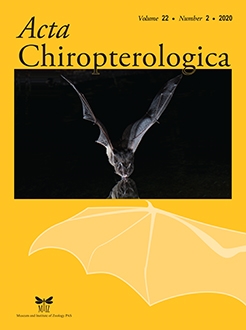Bats spend half of their lifetime roosting, but their behaviour during this state has not been analysed in most species. The analysis of roosting behaviour is crucial to understand many aspects of bat ecology and social dynamics, but it can be hard to do in natural conditions, especially in cave-dwelling bats. In two species of long-nosed bats (Leptonycteris curasoae and L. yerbabuenae), reproductively active males display a unique smearing behaviour and develop an odoriferous dorsal patch during the reproductive season, presumably involved in female mate choice. As a first step to study the smearing behaviour under controlled conditions, in this study, we analysed the roosting behaviour of a captive group of 18 adult individuals (1:1 sex ratio) of L. curasoae through analysis of day-round (24 hrs) video recordings. We succeeded in producing an ethogram and in estimating the daily time budgets of the group. We also examined the effect of sex and condition of males (with dorsal patch, without dorsal patch) on behaviour. We identified 18 behaviours and classified them into five first-order categories (general maintenance, locomotion, vigilance, social and sexual) and two behavioural states (resting and self-grooming). Behaviours related to muscle and fur maintenance were the most frequent (wing stretching and self-grooming, respectively). Social behaviours (allogrooming and pushing) were relatively infrequent. The latter result suggests loose or cryptic inter-individual liaisons, probably associated with the natural dynamics of colony composition. The main difference between males and females was the expression of hugs (male to female), suggesting that this could be a sexual behaviour (pre-copulatory or pair-bonding). The behaviour of males was independent of the presence of a dorsal patch. We discuss the need for additional research to find the correlates of dorsal patch activity in order to control these variables in future studies aimed to investigate the smearing behaviour in captivity.
How to translate text using browser tools
1 December 2020
Roosting Behaviour and Time Budgets of the CuraÇAoan Long-Nosed Bat, Leptonycteris curasoae (Phyllostomatidae, Glossophaginae) in Captivity
Ariany M. García-Rawlins,
Jafet M. Nassar,
Zaida Tárano
ACCESS THE FULL ARTICLE

Acta Chiropterologica
Vol. 22 • No. 2
December 2020
Vol. 22 • No. 2
December 2020
captivity
Chiroptera
Curaçaoan long-nosed bat
ethogram
Leptonycteris curasoae
time budgets
Venezuela




